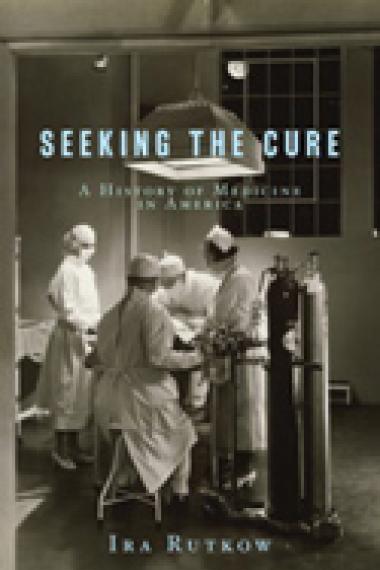All surgeons must devise a “way in” to their operation—choosing the entry point and the methodology for each complex procedure. In Seeking the Cure, Ira Rutkow, a surgeon himself, hits upon an elegant approach to the contentious story of American medicine. Throughout his remarkably entertaining account, Rutkow selects telling medical episodes—the tormenting of colonial surgeon Zabdiel Boylston by a violent mob, who believed that his smallpox inoculations spread disease; President James Garfield’s death in 1881 at the hands of his own surgeons, who neglected basic antiseptic techniques in treating his gunshot wound; or doctors’ extraordinary measures in 1926 to save Harry Houdini from appendicitis, which were unsuccessful but underscored clinical advances—to capture the essence of medical knowledge of the day, and place it in a social context.
Several powerful themes emerge in Rutkow’s account. One is the persecution and general calamities endured by many of the great innovators of American medicine. Boylston was so terrified of the mob that he visited his smallpox patients under cover of darkness and disguised in a wig. The three men who, in the 1840s, made the findings that led each to claim he had discovered anesthesia, all went under-recognized and largely uncompensated. All three also had unhappy deaths: One took his own life, aided by chloroform; another, beset by despondency and paranoia, suffered a fatal stroke; the third spent his last days in a Massachusetts insane asylum. William Halsted, whom Rutkow describes as perhaps America’s greatest surgeon, tested cocaine on himself in the 1880s before using it as an anesthetic for his patients. He became addicted and spent months in psychiatric hospitals, before resurrecting his career—by using morphine to wean himself off cocaine. Reading Seeking the Cure is not unlike watching the television series House: The great medical visionaries are simultaneously portrayed as brilliant, eccentric, and suspect, and the narrative is told through specific, pithy anecdotes that illuminate larger controversies.
Another theme is the inexorable growth of the medical-industrial complex. Between 1940 and 1965, as expensive technologies came to dominate American medicine and the power of the American Medical Association (AMA) grew, national health care expenditures multiplied tenfold. Today, health care spending accounts for nearly a fifth of America’s gross domestic product. Rutkow describes the current system of “for-profit corporate-guided medicine,” which rewards physicians and hospitals for how much care they provide rather than how clinically valuable that care is, as “an economic tyranny of medical services and scientific technology.” Yet this “tyranny” was perhaps not inevitable. Harry Truman raised the notion of national health insurance in the 1948 presidential campaign and eventually brought a bill before Congress. The AMA spent nearly $3 million—more money than any interest group had ever mustered for a single lobbying effort before that time—to defeat the bill. In 1962, it opened its war chest again to defeat President John F. Kennedy’s more limited proposal to provide national health insurance for senior citizens. It is one of the many contributions of Seeking the Cure to place recent events in the health care debate in a historical context.
Rutkow’s otherwise graceful narrative suffers from the occasional infelicitous phrasing, as when he writes that no disease encapsulated medical progress as well as appendicitis, “which burst onto the medical scene in the years surrounding World War I.” And the narrative concentrates overly much on the history of surgery—which is perhaps natural given that Rutkow himself is a surgeon. He acknowledges this bias in the book’s introduction, where he quotes Henry Bigelow, a 19th-century Harvard surgeon: “Why is the amphitheater crowded to the roof on the occasion of some great operation, while the silent working of some drug excites little comment? Mark the hushed breath, the fearful intensity of silence, when the blade pierces the tissues, and the blood wells up to the surface. Animal sense is always fascinated by the presence of animal suffering.”

